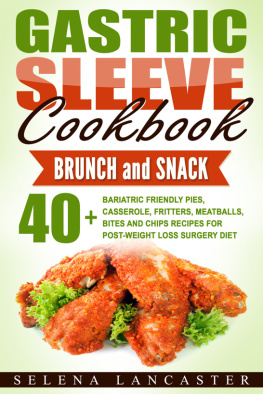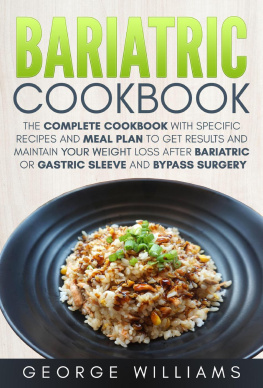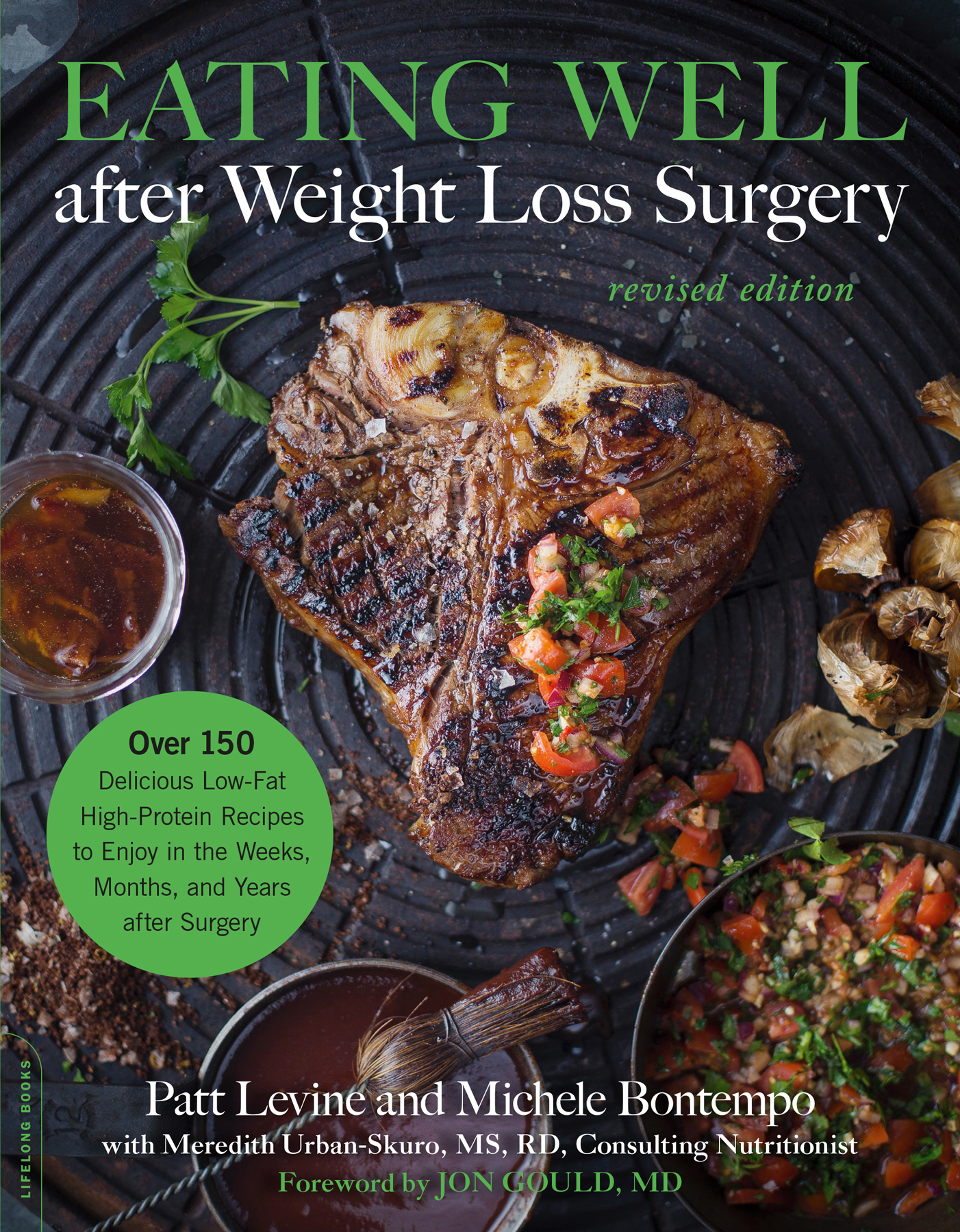Note: The information in this book is true and complete to the best of our knowledge. This book is intended only as an informative guide for those wishing to know more about health issues. In no way is this book intended to replace, countermand, or conflict with the advice given to you by your own physician. The ultimate decision concerning care should be made between you and your doctor. We strongly recommend you follow his or her advice. Information in this book is general and is offered with no guarantees on the part of the authors or Da Capo Press.
The authors and publisher disclaim all liability in connection with the use of this book. Many of the designations used by manufacturers and sellers to distinguish their products are claimed as trademarks. Where those designations appear in this book and Da Capo Press was aware of a trademark claim, the designations have been printed in initial capital letters. Copyright 2018 by Patricia Levine and Michele Bontempo Cover design by Alex Camlin Cover image Stockfood Cover copyright 2018 Hachette Book Group, Inc. Hachette Book Group supports the right to free expression and the value of copyright. The purpose of copyright is to encourage writers and artists to produce the creative works that enrich our culture.
The scanning, uploading, and distribution of this book without permission is a theft of the authors intellectual property. If you would like permission to use material from the book (other than for review purposes), please contact permissions@hbgusa.com. Thank you for your support of the authors rights. Da Capo Press Hachette Book Group 1290 Avenue of the Americas, New York, NY 10104 dacapopress.com @DaCapoPress Originally published in paperback by Marlowe & Company in July 2004 Revised Edition: December 2018 Published by Da Capo Lifelong Books, an imprint of Perseus Books, LLC, a subsidiary of Hachette Book Group, Inc. The Da Capo Lifelong Books name and logo is a trademark of the Hachette Book Group. The publisher is not responsible for websites (or their content) that are not owned by the publisher.
Library of Congress Cataloging-in-Publication Data has been applied for. ISBNs: 978-0-7382-3504-2 (paperback), 978-0-7382-3505-9 (ebook) E3-20181024-JV-NF
B ARIATRIC AND METABOLIC surgery has come a long way since the early days in the 1960s. Over the past fifty years, many bariatric surgical procedures have come and gone. Some of these procedures just didnt work (such as horizontal gastroplasty, known in the 1980s as stomach stapling), and others led to an unacceptable rate of nutritional or other issues (jejunoileal bypass). Modern and minimally invasive alternatives have arrived to replace procedures that are now rarely performed (for example, vertical banded gastroplasty has been replaced by the laparoscopic adjustable gastric band and the sleeve gastrectomy). The gastric bypass is the longest-standing bariatric procedure still commonly performed to this day.
In the United States, the most commonly performed bariatric surgical procedure is the sleeve gastrectomy, followed by gastric bypass, laparoscopic adjustable gastric band, and biliopancreatic diversion/duodenal, switch respectively. New endoscopic alternatives are appearing and slowly gaining popularity. These include such options as the intragastric balloon, endoscopic sleeve gastroplasty (like a sleeve gastrectomy with an endoscope), and the endoscopically placed duodenal-jejunal bypass liner. (Each of these procedures has its own advantages and disadvantages, and many factors go into recommending a particular procedure to a particular patient.) In 2014, it was estimated that nearly 200,000 bariatric surgical procedures were performed in the United States. Bariatric surgery is safer than it has ever been. When I first started performing bariatric surgery in the late 1990s, we would quote a mortality rate of around 1 percent following bariatric surgery.
In 2017, at accredited bariatric surgery centers in the United States, the mortality rate was 0.1 percent (thats a 90 percent reduction). Bariatric surgery has been shown to lead to improved health, with high rates of remission of type 2 diabetes, gastroesophageal reflux, and obstructive sleep apnea, to name just a few conditions. Patients experience an improved quality of life and sense of well-being. Bariatric surgery actually decreases a persons risk of dying over time. And, to consider the financial impact, obesity is costly (about $1 of every $10 spent on health care in the United States is related to obesity), and bariatric surgery has been demonstrated to be cost effective. All professional societies that represent physicians who manage severely obese patients (the American College of Cardiology/American Heart Association, American Association of Clinical Endocrinologists, the Obesity Society, and more) recommend bariatric surgery referral and evaluation for morbidly obese patients who are considered appropriate surgical candidates.
Despite all of the above, bariatric surgery is vastly underutilized, and less than 1 percent of eligible candidates undergo surgery each year. There are likely many reasons for this. There are misperceptions that bariatric surgery is risky or that patients gain all of their weight back. There is also a lack of understanding about the causes of obesity, and how difficult it is for patients to overcome this conditioneven among health-care providers. Primary care physicians generally underemphasize obesity treatments, overestimate the risks of bariatric surgery, and have a poor understanding of the ideal surgical candidate or when to refer. Moreover, access to bariatric surgery services is poor in many parts of the country, most often related to unreasonable insurance requirements or restrictions, or a complete lack of coverage.
At the same time, obesity has become more and more prevalent worldwide. Its estimated that one third of adults in the United States have obesity. Obesity is a complex, chronic, and progressive disease resulting from multiple genetic and environmental factors. People affected by severe obesity are resistant to long-term weight loss through diet and exercise. When an obese person loses weight through dieting, his or her body will reduce energy expenditure so as to conserve calories (the body is reacting to a state of relative starvation). With dietary weight loss, the amount of dietary fat the body burns is reduced by approximately 50 percent.
Because the body thinks that it is not getting enough food, the body reacts to this state of decreased energy intake by increasing appetite. During a diet, as the metabolism decreases, the ability to efficiently store fat increases, and appetite increases, weight regain is inevitable. Unfortunately, many of these changes persist long term, which can contribute to weight gain in excess of the starting point for some patients. The National Institutes of Health Experts Panel recognized that long-term weight loss is nearly impossible for those affected by severe obesity by any means other than metabolic and bariatric surgery. Over the past seventeen years as a bariatric surgeon, I have talked to thousands of people who have struggled with obesity for much of their life. Although everyones personal path to weight loss surgery is different, there are common themes.
Prior to considering surgery, many people have successfully lost weightsometimes a lot of weight. All of them have gained that weight back, usually despite an ongoing commitment to a diet or exercise program that seemed to work at first but at some point just stopped working. Many patients question whether it has really come to the point where they actually need to have surgery to finally overcome obesity. Many have considered surgery for years. I have heard patients wonder aloud whether surgery is the easy way out or if it means they are giving up. The decision to pursue bariatric surgery is not made lightly.








